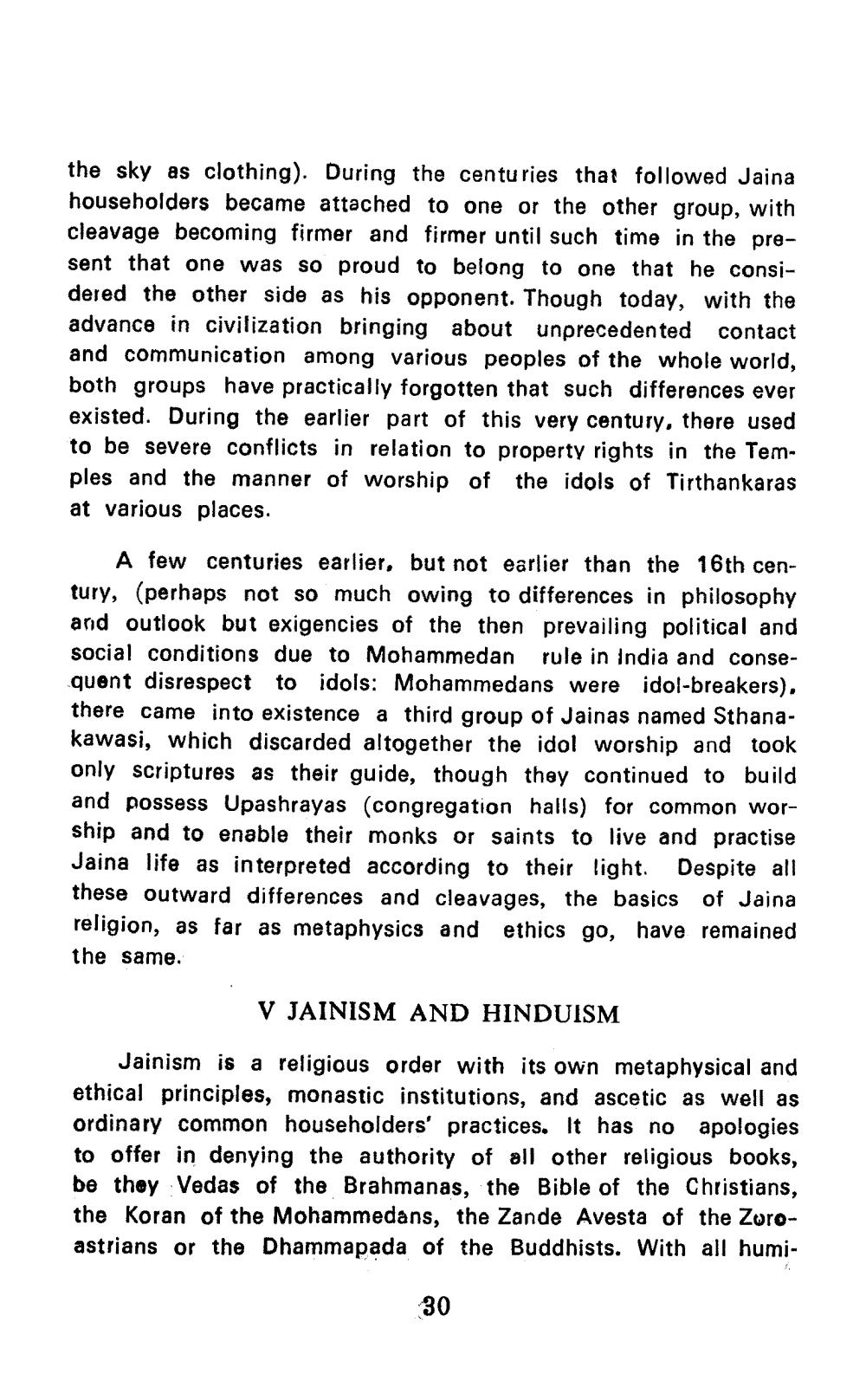________________
the sky as clothing). During the centuries that followed Jaina householders became attached to one or the other group, with cleavage becoming firmer and firmer until such time in the present that one was so proud to belong to one that he considered the other side as his opponent. Though today, with the advance in civilization bringing about unprecedented contact and communication among various peoples of the whole world, both groups have practically forgotten that such differences ever existed. During the earlier part of this very century, there used to be severe conflicts in relation to property rights in the Temples and the manner of worship of the idols of Tirthankaras at various places.
A few centuries earlier, but not earlier than the 16th century, (perhaps not so much owing to differences in philosophy and outlook but exigencies of the then prevailing political and social conditions due to Mohammedan rule in India and consequent disrespect to idols: Mohammedans were idol-breakers), there came into existence a third group of Jainas named Sthanakawasi, which discarded altogether the idol worship and took only scriptures as their guide, though they continued to build and possess Upashrayas (congregation halls) for common worship and to enable their monks or saints to live and practise Jaina life as interpreted according to their light. Despite all these outward differences and cleavages, the basics of Jaina religion, as far as metaphysics and ethics go, have remained the same.
V JAINISM AND HINDUISM
Jainism is a religious order with its own metaphysical and ethical principles, monastic institutions, and ascetic as well as ordinary common householders' practices. It has no apologies to offer in denying the authority of all other religious books, be they Vedas of the Brahmanas, the Bible of the Christians, the Koran of the Mohammedans, the Zande Avesta of the Zoroastrians or the Dhammapada of the Buddhists. With all humi
30




